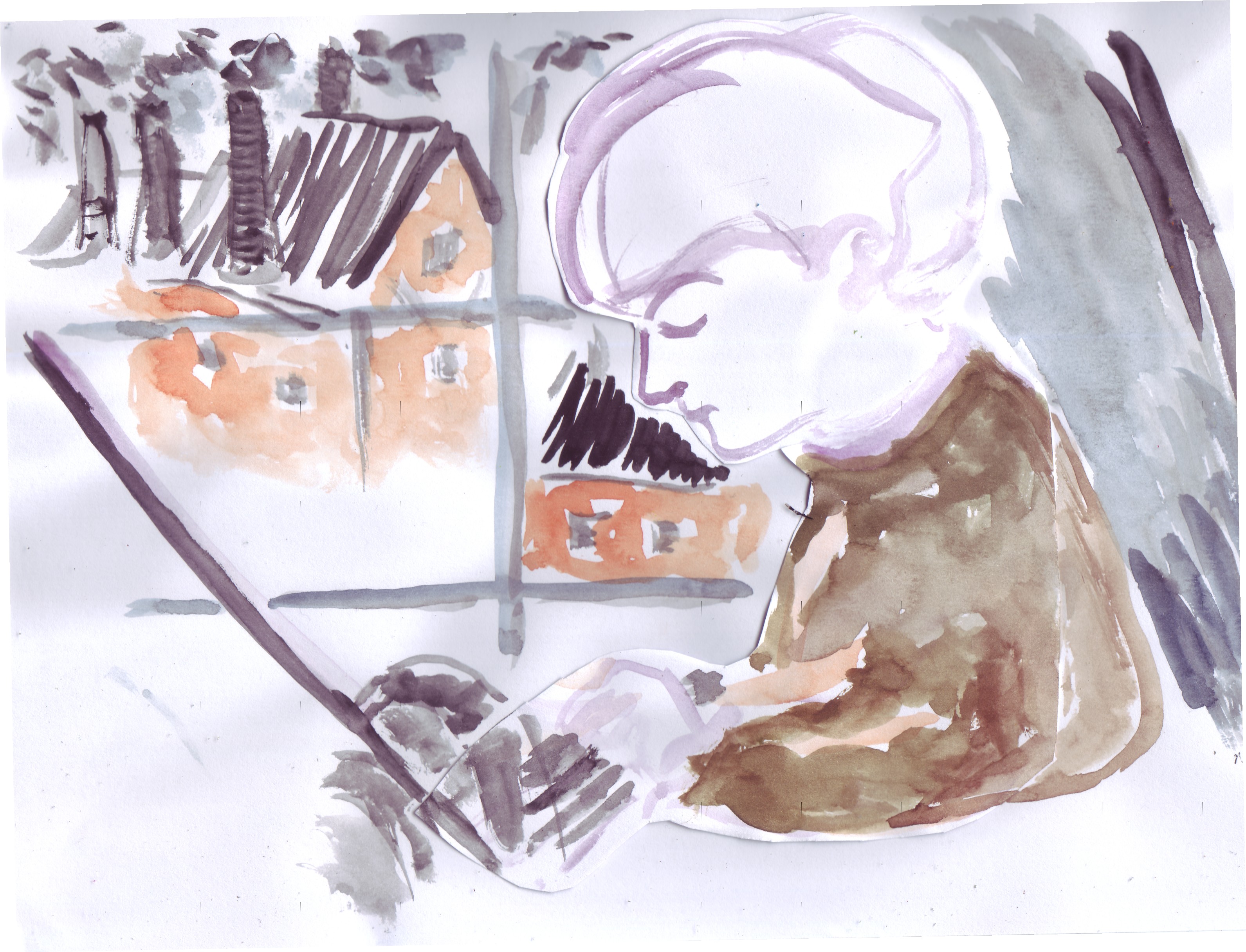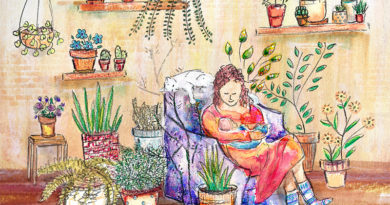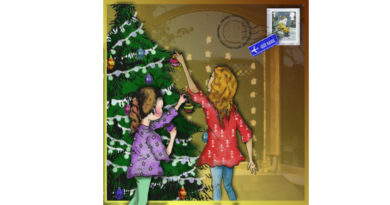Women’s Legacy from the First World War
 100 years ago, World War I raged, changing the face of Europe and leaving millions dead, maimed or bereaved. One of the many writing about these times is broadcaster and journalist Kate Adie. Her fascinating book Fighting on the Home Front: The Legacy of Women in World War I describes how the traditional role of women changed dramatically and almost overnight. As Britain turned into a war machine, sending soldiers by the thousands to the Front, women took their places at the Home Front, to keep industry, transport, offices, banks – in short, the whole economy – running. It is said that the war was won because of them.
100 years ago, World War I raged, changing the face of Europe and leaving millions dead, maimed or bereaved. One of the many writing about these times is broadcaster and journalist Kate Adie. Her fascinating book Fighting on the Home Front: The Legacy of Women in World War I describes how the traditional role of women changed dramatically and almost overnight. As Britain turned into a war machine, sending soldiers by the thousands to the Front, women took their places at the Home Front, to keep industry, transport, offices, banks – in short, the whole economy – running. It is said that the war was won because of them.
Adie shows how women were catapulted from domestic life into this war machine, how it affected men, and the sweeping changes in all areas of life and the economy. She describes the challenges and painful decisions, from accepting women in the work place, to the wearing of trousers or long skirts, as legs were not supposed to be seen.
World War I changed the face of the whole world. Monarchs toppled, nations regrouped, great empires were reduced, and billions lost their lives, their limbs, and their mental health. It left behind a generation of single women who had no possibility of marriage. In England, the war threw women almost overnight from peace and security into a world where the rituals and traditions of social status, education, fashion, lifestyle and even morals were literally shot away.
War was declared in August 1914 when German armies marched into neutral Belgium. From that day on England was a war machine, with an ever-growing hunger for more soldiers and more ammunition. Young men were recruited by the thousands, leaving enormous gaps in the work force. Women were now needed for the Home Front, as their men joined up and left for the war Front.
The involvement of women in the first few weeks of the war pushed open a door to greater acceptance in the workplace and the economy, whereas before the war, the suffragettes had hammered forcefully on it, to little avail. But now women were needed. Many would be killed in dangerous jobs, such as ammunitions or nursing at the Front. For the first time women were involved in the same kind of violence as men in uniform. It was obvious they had no say in going to war, yet they were dying in it. This changed their status.
Before the war, women occupied a specific place in a structured society. The working classes were employed in mills and factories or as domestic servants. As more and more men left for the Front (never to come back), women were needed in munitions, the heavy steel and coal industry, rolling stock and farm labour. Middle- and upper-class women enjoyed comparative comfort and security; they led dull lives, with little freedom, little higher education, controlled first by their fathers and then by their husbands. Weeks into the war, the universities emptied, as most young men left for the Front. Women now had their chance. Faced with no students, the reluctant (and elderly) professors were forced to yield. Women took the empty places and kept the universities going.
Women’s traditional way of life changed dramatically and almost overnight, and their legacy began to take shape. Women were now not only tolerated but also essential for the work force. They could go to work unchaperoned, earn a little money – much less than the men, but enough to let them acquire something they wanted; they could go out on alone and pay their own way. They even began smoking in public!
The giant leap into trousers
This new labour force on the Home Front was full of challenges and difficulties. The workplace, and particularly offices, had a men-only policy and atmosphere. The term “clerk” denoted a certain status that women didn’t have. So could they be called “lady clerks”? Washrooms and toilet arrangements had to grapple to provide facilities for ladies. Could both men and women use the same entrance door? Could women be called by their surnames, like the men? And what about lunch: could women go to the local pub or restaurant on their own?
There were other challenges in industry and transport systems. At first there were countless complaints about the practical clothes women were adopting for jobs in heavy industry. Skirts and their lengths were the subject of hot debate. Trousers were immoral, and women’s ankles must not be seen. Women were asked to wear tunics to hide their trousers. Yet women had to heave around heavy shell casings on oily factory floors; they had to go up ladders to clean and service railway engines; they had to shovel coal, work with steel, and stand, in long skirts, for 12-hour shifts as bus conductors. The new ammunition factories set up across the country were strained to provide facilities for the influx of women.
Rapid mobilization caused rapid emptying of the workplace and required immediate solutions. In Glasgow when 1000 men joined up in the first month, the tramlines company recruited young women and equipped them with striking floor length tartan skirts. People were intrigued with this new breed of tram conductors, not just driving the tram, but also wielding the long poles required for untangling the overhead wires.
3,500 men left London Transport in the first two days of the war. A rapid recruiting campaign targeted women with the help of the Police Headquarters in Scotland Yard to look into their background. High-legged boots, long skirts and stiff jackets were not comfortable for a 12-hour working day, “But,” said one, “Our men at the Front have it worse.”
Lady drivers were a rarity – ok for private cars or the odd taxi, but not considered safe enough to drive a London bus. Yet women across the Channel at the Front were driving heavy, unwieldy ambulances across fields and muddy ground with no proper roads and a load of wounded soldiers. Taxis had to display a notice advising those of a nervous disposition not to choose a woman taxi driver.
The railways, which were essential in the days before cars, had to rely on women to keep them running. Here again, women were not considered capable of driving trains, but could be conductors, or staff at stations, whilst the working classes were set to work cleaning and servicing the rolling stock. Staffing signal boxes was a problem because of the small space and isolation. Men did not like this.
The picture of cities changed, as women took the place of men everywhere, at shop counters and cash desks, working the lifts in public buildings. In order to preserve tradition, households that had formerly had butlers now had to kit out their maids with a new outfit to make them look like footmen.
Women found a new sense of freedom and worth. Yet they were still treated with suspicion, tolerated because it would only be for the duration of the war, paid less than men for the same work. The Women’s Volunteer Reserve was set up to provide a trained and efficient body of women who did much to stem panic in the event of a German raid by sky or sea. In spite of their disciplined training and the emphasis on soldier-like qualities, they were subsequently only used to cook, clean, run canteens, pack Christmas parcels for the Front and or clear snow from the streets.
The middle and upper classes, whilst not needed in the work force, contributed to the Home Front with their volunteer and welfare work, discovering they had important skills for this particular task. They formed Committees and Groups, they learnt how to drive, how to be office clerks, and how to nurse and cook. Most important, they knew how to organize and use their connections to raise money, to acquire office space and buildings, and to deal with the challenges that increased day by day. The outbreak of war brought an immediate flight of refugees from invaded Belgium. The government announced it would “offer war victims the hospitality of the British nation.” Thousands of women worked flat out at caring for and feeding them. By Christmas there were over a quarter million refugees in England. A gigantic web of energized, purposeful females took initiative and shouldered responsibility in a way never seen before, to deal with the refugee challenge. And they did. And how would this affect their legacy?
The Home Front in the early war days was seen as an unwelcome but necessary part of the price to pay for victory. Women would resume their traditional roles when the war ended and go back to being subdued and dutiful wives and mothers – not required to think for themselves, act on their own initiative, or lead a life of their own. This was a comforting thought for the majority.
What was not foreseen was that the tentacles of all these voluntary groups would spread far beyond the Home Front. Women’s war efforts began to change the pattern of life, especially for middle-class girls. For the first time they had a modicum of freedom, unchaperoned, learning new skills, even if just pouring tea in a canteen, when you had previously only been served tea by your maid. The pent-up frustration from before erupted now on the Home Front and enabled England to fight the war in spite of the enormous loss of life at the War Front.
How Bovril saved soldiers
One enterprising young woman realized that during the winter months, shivering soldiers in the trenches could be sustained with a nourishing, warm drink. She chose something from her own food cupboard – a meat-extract drink called Bovril, and decided this could help warm the inner man. Her scheme was an instant success. She attracted funding and logistical help, and eventually soldiers not just in Europe, but the Balkans, Mesopotamia, Gallipoli and even Mombasa were being comforted and saved by her Bovril.
Women saw the need to provide some refuge and recreation for the suffering men at the Front in France and Flanders, so the Women’s Auxiliary Committee (WAC) was formed. They organized places where the soldiers could find a welcoming refuge, warm food and drink, space to relax and write a letter, and for a few moments escape from the horrors outside. Women found they had a gift of offering sympathy and time to listen to men traumatized by conditions in the trenches and on the Front. The WAC was full of capable women – mainly from the middle and upper classes. One soldier relaxing there once enquired about the name of the lady who had just served him a cup of tea. It was Lady P., and he replied that he had thought as much: “Before the war I was a servant in her house, waiting at the table. Now things are reversed, and Her Ladyship waits on me.”
Four and a half years later, in November 1918 when the war ended, millions were dead or maimed. In England practically every household had lost one or more sons. This meant that the women left behind had no one to marry. They would never feel the joy of holding their own babies. It was a bittersweet victory for women who earned their legacy from World War I.
Personally, I loved the chapters which describe how women tenderly and maternally cared for the half million Belgian refugees in the first weeks of the war, and how they gave comfort and a listening ear for traumatized men at the Front. Kate Adie’s book is full of fascinating details about the background of women’s WWI legacy. I hope you will be as moved by the book as I am. Read it and enjoy!
The fascinating book by broadcaster and journalist Kate Adie is called Fighting on the Home Front: The Legacy of Women in World War I (ISBN 978-1-444-75969-3, published by Hodder & Stoughton, London).
By Joanna Koch
Joanna Koch is a long-time LLL leader and a team member of Mothering Matters since its inception.
Illustration by Albina Nogueira
Albina Nogueira has been a primary school teacher since 1992, and a writer and illustrator since 2006. She currently lives in Switzerland, but her homeland is Portugal. She is also the author of Letters to Grandparents and Hairdresser. To find out more, like her on Facebook or see her books in Amazon.




